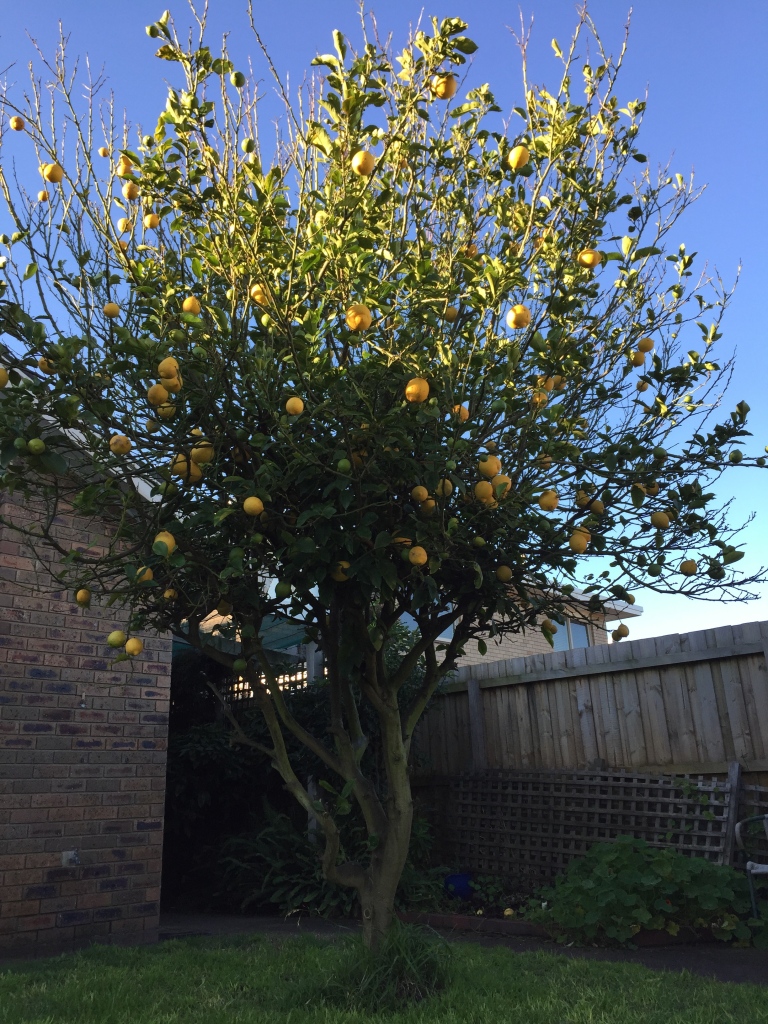In my yard, between the washing line and the garden shed, we have a lemon tree. It’s an ugly lemon tree. There are no big strong branches, just about a billion skinny shoots all craning for the sky. Leaves are inexplicably missing from the top, but overabundant as an angry mess in the centre. Lemons grow straight off the trunk. Like moles.

Prune it, you say? I dare you to. It’s medusa-like. Cut one branch and six sprout in its place. And then there’s the thorns, sharpened in the depths of hell to penetrate the toughest of gloves. It will not be tamed.
This lemon tree embodies everything that disappointed me about our garden when we first moved here. Sure, it was comforting in an ‘old world’ kind of way. It was my grandmother’s garden. Camelias. Hydrangeas. Oleander. Gardenia. Salvias. All the classics. Great for pretending that you’re still in England, but as far as I was concerned, not great for biodiversity. There was not a single native plant in sight! It had none of the wildness required to attract the wildlife I so longed to see.
In what I can only assume to be an act of spite, my ugly lemon tree proved me wrong.
It is a hotbed of native bird diversity. Fairy wrens, Silver Eyes, Spotted Pardalotes, Eastern Spine Bills, Yellow-Rumped Thornbills, and New Holland Honeyeaters. All flock to my lemon tree. In the past year I’ve spotted species I have never seen anywhere before. For example, this, is a Golden Whistler. Look at it. Isn’t it glorious?! I didn’t have to do anything – it came to me. I mistook it for a particularly good looking lemon until it flew away.

What do birds see in my ugly lemon tree that I do not? Some come for the insects. The silvereyes, smaller than the lemons themselves, busily skip about from twig to twig, diligently checking the underside of each leaf for aphids, caterpillars and spiders. The honeyeaters come for the nectar – good both for pollinating the flowers and entertaining me. It’s the most wonderful distraction, watching these amazing birds busy themselves about the gnarled labyrinth of my lemon tree. All I have to do is glance out the window of my study.
Now I’m not for a second suggesting that native gardens aren’t important. Not only do they attract wildlife, but they’re much more suited to the climate, and if you live near parkland there’s less chance of non-natives escaping into the wild. Also, some of our wildlife are more particular than others. Simply switching a bottlebrush for a salvia is not going to cut it.
But there’s no need to despair if your garden doesn’t resemble a pristine bush block. You can, and probably do, have a huge array of wildlife visiting your yard, so keep an eye out! In many cases non-native plants can serve the same function as native ones would. If you want to encourage a diversity of birds, aim for a range of different types of plants. Bushy ones, neat ones, ones that drop big seeds, form hollows and ooze delicious nectar. Animals are resourceful and will find a way enjoy even the ugliest of gardens.
Birds in Backyards: http://www.birdsinbackyards.net

You are wonderful writer, I read this out loud to my eighty-two year old mother and we both laughed and enjoyed the imagery!
LikeLike
This comment means the world to me. Thank you so much.
LikeLike
I was searching the internet to learn more about lemon trees and noticed your thumbnail along with the title “My ugly lemon tree.” I’m so glad I clicked to read your blog post. It definitely made my partner and I chuckle this morning. Thanks for a great read!
LikeLike